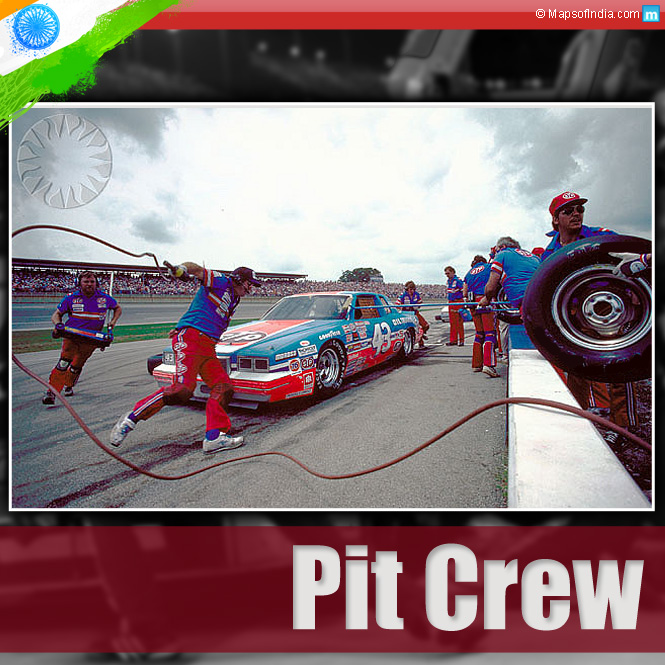In any motor-sport event the two essential ingredients for winning are good machine and a great driver but like all of “Victory’s secrets”, one key ingredient remains hidden in plain sight: The heroes behind the number of zeros on the winner’s cheque – the real deal behind the spinning wheels – the ones who make sure that anything and everything in the car is tuned for victory and whose efforts hardly get the limelight, The Pit Crew.
Pit crew members have a number of duties to perform and in as short a time-span as possible so as to ensure a minimum time off the race-track for the driver. During a scheduled pit stop, the most obvious ones are refueling the car and changing its tyres. Other duties include removal of dirt and debris from inside the radiator, air intakes, cleaning the windshield or in some cases – helmet visors, adjusting and readjusting tyre pressure, checking and resetting the suspension as needed, and for long races or endurance runs, replacing the brake pads and other perishables.
Unscheduled pit-stops require other services to be performed since they usually follow damage or mechanical, running issues. Emergency repair protocol requires all vital components being attended on a priority while the remaining ones could just be scheduled.
A ‘Lollipop man’ handles the team’s pit sign
In Formula One, for example, where a number of people are involved for a scheduled pit-stop, a “Lollipop man” is assigned the team’s pit sign and he flashes it to help the driver pull up in the right stall through a crowed pit lane. During the stop, he is required to remind the driver to keep the brakes on by holding the sign in position, guide him to put the car in gear as soon as the jacks are lowered, and flag him off by raising or pulling away the sign from in front of the driver. Eventually, Ferrari and some other teams shifted to a traffic light system to replace the lollipop man.
Generally, there are four tyre changers, one at each wheel of the car, with the sole duty of removing the wheel nuts with a pneumatic wrench. Tyre carriers are assigned to quickly replace the used tyres with the new ones so that the changers can put them back on. Two stabilizers or side supports stable the car from both sides by lifting it on jacks in the middle.
In the Indycar series, the cars have built-in pneumatic jacks which apply downward force in order to lift the car. The tyre changers wait for a mechanic to quickly activate the car’s built-in pneumatic jack, and then proceed to remove the nuts.
A mind-boggling pit-stop for just 1.92 seconds!
The refuelling man or “gas-man” pops the fuel lid and pours a fresh supply of gasoline, topping off the tank using a special long hosed gas can. There is also an extra hand appointed to clean the wind-shield or the helmet visor, and providing the driver with drinking water and other necessities. The extra hand is, however, not required to perform any mechanical function on the car.
There is a man appointed as the fire extinguisher, to stand ready with a hand-held extinguishing device to stop any accidental fires, long enough to allow the pit crew and driver to evacuate. The starter man is rarely seen nowadays and his job was to stand ready with a cranking or starter tool to restart the car in case of an engine stall.
Different races and different conditions require their own schedules and time limits for pit-stops. The longest pit-stops being those of week-long rallies that last for minutes to hours depending on the need, endurance run pit-stops that last for about thirty to forty seconds, Indycar stops pulling the notch between ten to fifteen seconds and the fastest being Formula One pit-stops in which the time lapse between the car entering and leaving the pit is hardly three to four seconds. Last year, in the US Grand Prix, the Red Bull racing team completed a pit-stop for Mark Webber in just 1.92 seconds, setting a record of the fastest Formula One pit-stop ever.





